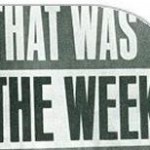Share it
 Lord Justice Jackson’s proposals for a costs council fell flat, and it was announced that the Advisory Committee on Civil Costs was to be disbanded. Lord Neuberger had been a vocal supporter of introducing new regulation in litigation billing, stating that the profession urgently needed to adopt “value pricing rather than hourly billing”, and that the introduction of alternative business structures into law would “sound the death knell of hourly billing, as it will lead to more positive and market-orientated practices”.
Lord Justice Jackson’s proposals for a costs council fell flat, and it was announced that the Advisory Committee on Civil Costs was to be disbanded. Lord Neuberger had been a vocal supporter of introducing new regulation in litigation billing, stating that the profession urgently needed to adopt “value pricing rather than hourly billing”, and that the introduction of alternative business structures into law would “sound the death knell of hourly billing, as it will lead to more positive and market-orientated practices”.
An interesting decision was handed down on excluding identification evidence. The evidence under consideration was obtained from a police identification parade where the one of the suspects had an identical twin brother, and the two were completely indistinguishable from each other except by close friends and family. Both of the twins were included in the ID parade.
“The prosecution is correct in its suggestion that it is permitted for individuals who look roughly alike to be shown together in order to avoid the confusion or difficulties that may arise if they are viewed on separate parades (R v Wayne Van Der Spuy [2005] EWCA Crim 2976; R v Coddington [2005] EWCA Crim 197) and in my judgment this requirement applies with greater force to identical twins. The stronger the similarity, potentially the more powerful the need to hold one rather than two parades in order to establish whether the witness is able to distinguish between two individuals who are said closely to resemble each other (although I stress that the Code makes clear this is not obligatory). Viewing the two people concerned together as part of the same process will usually give the witness the best opportunity to decide if the perpetrator is one of these two similar (or “identical”) members of the line?up. Otherwise, the witness ought to be told to delay making any identification until he has seen both parades – “the whole set” – at least twice.”
It was held that although the police and prosecution had implemented intelligent and imaginative measures to deal with a problem that is not sufficiently covered by PACE, the witness could not be said to be able to properly distinguish between the twins.
The Foreign Office spent £10,000 on having a 20ft long stuffed anaconda repaired. The snake, named Albert, appears in photos from 1892 so has been there for at least 120 years. The Foreign Office has stated that it is obliged to maintain the department’s assets, and so it was necessary to send Albert for a CT scan and “conservation and restoration” work.


